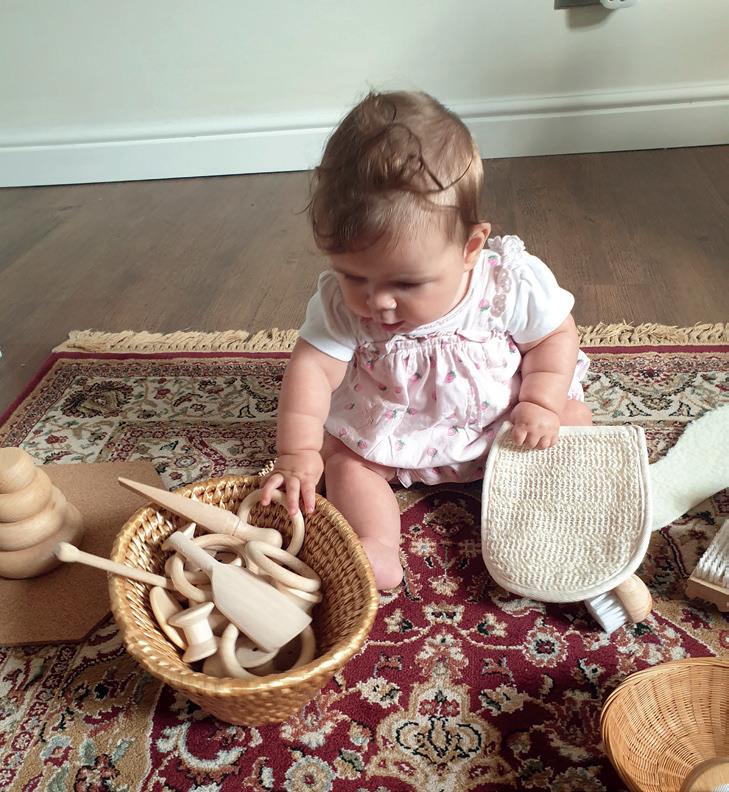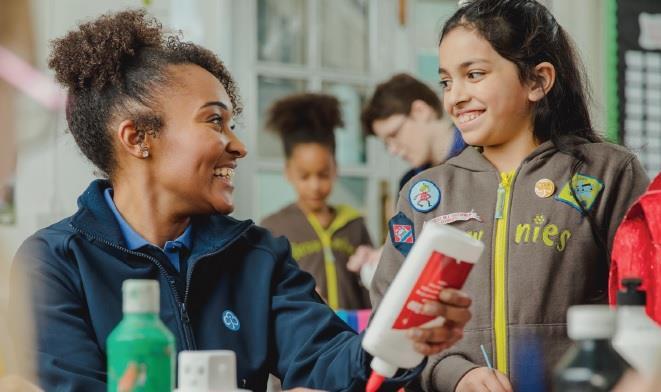
4 minute read
What is Heuristic Play? by Stacey Appleby @what_dorothy_does
Throughout the world play is the primary way babies and young children learn, it is the universal language of childhood. Living in a western society means we have access to a large variety of commercial toys. However, why is it when we give our child a present they are more interested in the box? Could it be that this actually provides your child with a greater learning experience than the toy you just purchased?
Children in less affluent societies do not have access to the same number of manufactured toys, and will play with unconventional items. Research has shown that all children’s play is meaningful and the learning outcomes are equal if not greater when a non commercial product is being used. Children learn through exploration of their environment, using all of their senses, and the human brain thrives when provided with varied sensory stimuli. Commercial toys are often full of visual stimulus, but lack other sensory experiences. Items of plastic food may look different, but to a child a plastic apple tastes and smells the same as a plastic chicken. Eleanor Goldschmied the founder of heuristic play stated, that children cannot understand the world around them if they are not given the opportunity to feel it.
Advertisement

The word heuristic is defined as ‘to discover or gain an understanding of’, meaning heuristic play is an opportunity for babies and nursery aged children to explore without active adult interaction. By using non commercial items, we create open ended play opportunities which nurtures children’s natural curiosities, as there is no set way to play with the object. This type of play is fundamental in supporting children in all of their developmental areas. If we go back to the box mentioned at the beginning, this could support children’s expressive arts and design development, as it can become a drum kit, a rocket or a house. Alternatively they could explore shape, space and measurements to see what can fit inside the box, developing their mathematical skills. The role of an adult within heuristic play is to source collections of items and provide uninterrupted time to play with out distractions. As parents we want to help our children achieve, we frequently will turn a puzzle piece around so it fits, but their learning is greater if we allow them to freely explore. Heuristic play is totally child led, this allows them to think critically and creatively to find out what can be done with each object.
Just as there is no one way to play with heuristic items, there is also not a set list of what to include.
Heuristic resources are individual and therefore will vary. Collections are not static and items can be changed throughout the year. I will often alter items to follow the seasons or to facilitate a particular interest my daughter has shown. Recently she showed an interest in balls, so I created a basket of objects that rolled differently, including lemons, kitchen roll tube and a bobbin. When selecting your resources try to incorporate lots of different sensory elements, below are some examples of what you could use:
• Wooden items: bowls, spoons, spatulas, honey drizzler, boxes, large buttons, curtain rings, bobbin, wooden egg, mug tree, dolly peg • Cardboard items: boxes, kitchen roll tubes, egg box, sellotape ring • Plastic items: plant pots, costume jewellery, bottles, ping pong ball, ice cube tray • Natural Items: fir cones, pine cones, shells, citrus fruit, conkers, natural sponge, sticks, cork, stones • Textures: ribbon, hair roller, loofah, fur, leather, brushes, exfoliating mitt, silk scarf • Metal items: tins with and without lids, chains, jar lids, bangles, saucepan, cake tin, muffin tin, colander, kitchen utensils
Resources will differ depending on the age of your child, be mindful of their developmental stages and check items for damage before use. Even though this is a child led activity, they should be monitored at all times to ensure their safety, but with limited adult interaction.
Heuristic play supports the uniqueness of all children and we can provide it for free by using items we already own. We lead busy lives and are often engaging with our children or using independent play time as an opportunity to pop the washing on, however heuristic play provides you with the opportunity to sit back and watch your child learn. You will see their thought process and how exploratory play puts in the building bricks of learning. Also you can have that opportunity to drink your coffee whilst it’s still hot!!

Follow us on Instagram @What_Dorothy_Does for more play ideas and feel free to message us with any questions. I really hope you have found this inspiring and interesting and mostly have a chance at enjoying heuristic play with your little ones!






